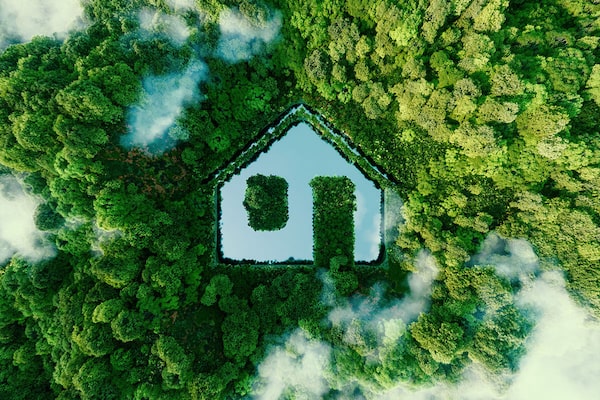
The Serving Rural & Remote Communities project will enable and empower rural, remote and Indigenous communities through co-developing innovative solutions.iStockPhoto / Getty Images
Dr. Nancy Olewiler, an economist and professor in the School of Public Policy at Simon Fraser University, knows all too well about the impact of environmental crises. When she was growing up in her hometown in eastern Ohio, a section of the state’s Cuyahoga River caught fire in 1969. An oil slick from industrial pollution had caused it, and the fire and ensuing damage became one of the most notorious environmental disasters in the United States.

Dr. Nancy Olewiler, economist and public policy professor at Simon Fraser University.Supplied
At home, Dr. Olewiler saw other effects of industrial pollution. “The little town I lived in near Cleveland had one factory, a paper bag company. There was a river running through town with a waterfall, and on Monday the water would be pink, on Tuesday it might be blue,” she says. “When you live in that area where [these things] happened, it has an effect on you.”
She has committed her career to challenging and changing the commonly accepted belief that economic policy and environmental responsibility cannot coexist. Today, her work focuses on public policy, including climate policy, natural resources, energy and regulation and risk. Dr. Olewiler is currently embarking on a new initiative to study climate solutions for rural, remote and Indigenous communities in British Columbia.
Launched in April, the team on this project, titled Serving Rural and Remote Communities: Co-developing place-based climate resilient solutions, will work directly with Indigenous communities to develop resilient housing and technology infrastructure options. They hope their efforts will help Indigenous communities to thrive while adapting to the impacts of climate change. In turn, the research team is seeking to learn from Indigenous place-based knowledge and experiences.
“One of the goals of this research is to celebrate and amplify what is working in communities, identify where help is needed and remove barriers, like not qualifying for infrastructure funding because of the [existing] rules,” says Dr. Olewiler. “Those who have lived through landslides, floods, wildfires and other climate crises are essential to our research.”
This project is a key example of SFU’s new strategy in action, bringing together a multitude of voices and experiences to find ways for academia and communities to work together towards common goals – in this case, engaging in global challenges.
Funded with $1-million from the Pacific Institute for Climate Solutions (PICS), the project team includes Dr. Olewiler, Maya Gisalon of SFU’s Health Sciences, University of Victoria Department of Civil Engineering professors David Bristow and Andrew Pape Salmon and colleagues from the University of Waterloo, University of Calgary, and the University of Washington. They will collaborate with the First Nations Housing and Infrastructure Council, BC Housing and Technical Safety BC.
“Remote communities have a great deal to share. They are the specialists when it comes to what their communities need and are seeking the most optimal solutions to protect their land,” says Niki Lindstrom, Director of Research and Analytics with the First Nations Housing and Infrastructure Council (FNHIC). “FNHIC has three Regional Housing HUB Coordinators, Marilyn Johnny, Sharon McKay and Doug Harris, who service the First Nations under their respective departments.”
The first workshop for this four-year project took place in mid-May, with academic members of the team launching their collaboration with rural communities by introducing the researchers and presenting the project’s goals: better housing and safer technical equipment that will result in greater health, safety and climate resiliency for community members.
After the presentation to the many rural and remote nations in attendance, breakout sessions were held during which Indigenous participants were able to express community concerns, share stories and offer insight into climate effects in the various geographic regions of British Columbia.
In the Peace River region, they are experiencing extreme forest fires earlier in the year. At this point, they’ve already had forest fires, evacuation orders, single entrance and exit road closures, as well as crucial watershed concerns.
Given that this project is intended to meet communities where they are and collaborate with them on a path to climate resiliency, Dr. Olewiler notes that while some communities are just beginning their journeys, “others have already been working on climate projects thanks to the BC Assembly of First Nations climate policies and other initiatives,” she says. “We want to work together to listen, share and keep talking. This is the beginning.”
It’s hoped these ongoing discussions will result in lasting change including improving building codes, moving forward on existing and future infrastructure plans, and finding ways to achieve net-zero carbon emissions for Indigenous communities so that they can thrive and remain on their lands.
There’s a lot of work to do and the pressure to get moving is real. During the consultation, Dr. Olewiler heard from a participant from the Okanagan who said the smoke was already affecting them. “It’s coming from Alberta right now,” she says.
“The most important thing I heard [from community members] was to pick up the pace. Don’t keep talking, things are happening, the time is now for action.”
Advertising feature produced by Globe Content Studio with Simon Fraser University. The Globe’s editorial department was not involved.